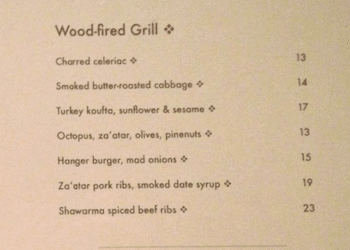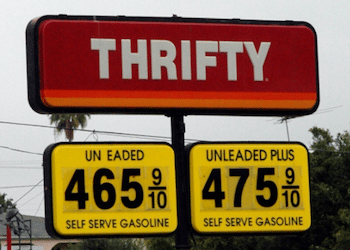Marketing Tips for Restaurants: Optimizing Prices
At our marketing agency in Nashville, we work a lot with restaurants. In fact, our first dozen clients were all restaurants in either East Tennessee, or here in Nashville. Typically the goal of a restaurant (or really any business) is to get more customers into the eatery: either on slower days, or less popular mealtimes. For this, we created customized reputation management for restaurants, combined with targeted email marketing to customers. However, one key factor that many of these restaurants overlook is that it is not just about getting more customers to their business. They could just as effectively raise their revenues by earning more money from each customer!
Today I will review a few ways that restaurants can optimize their menus, to help earn more money from each guest that they have. It is sometimes easier to get people to spend 15% more at the establish, versus getting 15% more new customers in the door. Combining the two strategies can be shockingly effective. In this scenario, increasing sales per customer by 15% while also adding 15% more customers – the establishment could actually more than triple gross revenues.
Tip #1: Remove Dollar Sign from Prices

Price formats tested in a study from Cornell’s School of Hospitality Management were numerical format with a dollar sign ($5.00), a numerical format without dollar sign (5.00), and written-out prices (five dollars). While the numerical manipulation did not significantly affect total spending, the price formats did show noticeable differences. Contrary to expectations, guests given the numeral-only menu spent significantly more than those who received a menu with prices showing a dollar sign or those whose menus had prices written out in words.
TIP #2: PRICE ANCHORING

Next time you go to a restaurant, search the menu for an anchor. This is the item on the menu with a high cost but not necessarily worth buying. Below or above it you will see a different item with a rather high cost (profitable), yet even despite its high cost we compare it to the first item, and it suddenly doesn’t seem so expensive.
An anchor is an item that makes “everything else near it look like a relative bargain.”
Why does this work? The psychological explanation is rather interesting. When we come to a purchase, we face uncertainty in decision-making. So we base the decision whether to buy or not, on the “loss” or “gain” compared to some alternative, rather than considering its absolute objective value.
TIP #3: ODD PRICING

Another thing that always noticed in certain restaurants is the use of Odd Pricing. Typically, you will see items selling online and in television commercials ending in .99.
This method has become so frequent that it is now synonymous with someone ‘trying to sell you something”. A 1997 study showed that 60% of pricing in advertising materials ends with the number 9, and the last thing you want is for your customers to feel like your proposal is promotional material. In the customer’s mind, they immediately associate this with “gimmicky marketing”
Another way to use odd pricing is using unusual numbers.
Basically if something cost $8 or $19 or $24, you feel like the price is fair and the restaurant has come to that price because of mark up and what they need to make it profitable. When you see a number like $10, you assume the product is probably worth $7 or $8 but they rounded it up.
Looking for ways to maximize revenue in your restaurant or business?
Rush Hour is a full-service digital agency based in Nashville, TN. Unlike many marketing companies guided by aesthetics, design or “gut feelings” about what works, our digital strategies are conversion and optimization based, with decisions guided by analytics and metrics. To learn more about how we can help revolutionize your marketing, please visit our homepage.
GET HELP NOW:
